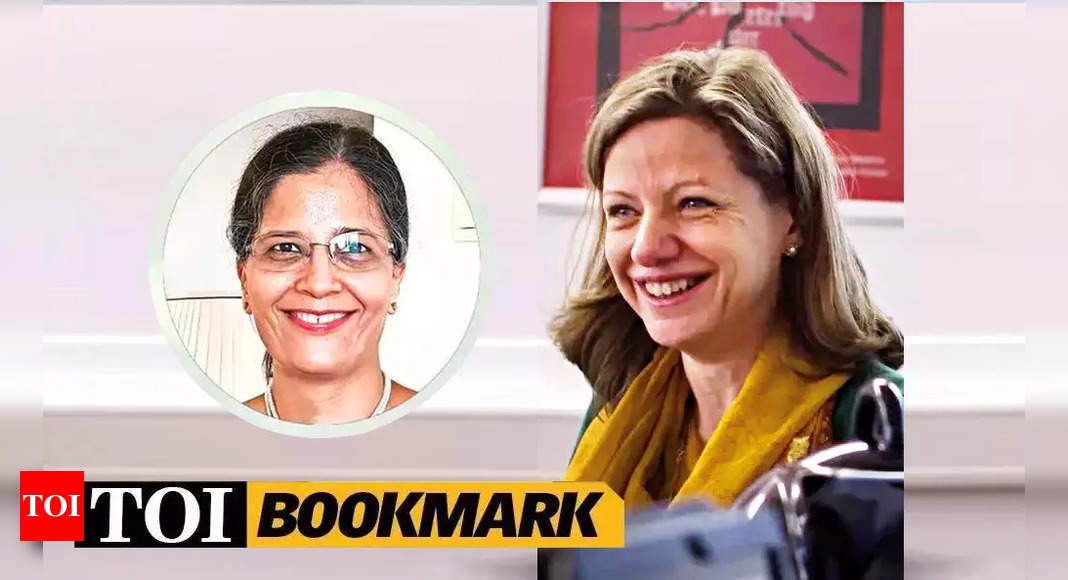Q: Why don’t you describe what ‘Jamia’s Aapa Jaan’ is and while you’re doing so, perhaps comment a bit on this title?
A: The book is a biography. It’s the first biography I’ve ever written of a young German-Jewish woman who was born in the north of Germany in 1895 and who grew up in Berlin. And she was an opera singer, she was a kindergarten nurse, she was a social worker. So really one of these biographies which blossomed after the First World War, when suddenly there were so many possibilities for young women, what changed her life course is that in 1924 or 25, we don’t have the exact date, she met three Indian students — Zakir Husain, Abid Husain, and Mohammad Mujeeb — in Berlin at a party who were involved in the foundation of the Jamia Millia Islamia. These four became close friends and she was fascinated by the project of Jamia. She asked them whether she could join them in their work. And Zakir Husain refused point blank saying it was not something that a European woman could ever face. She was disappointed, but for some time she agreed to his refusal until things became really bad in Germany in the beginning of the 1930s and she felt that she had to leave the country in 1932. And she first went to Palestine, and then to Bombay. And then she was at Jamia. She became friends with many of the women of Jamia and she really integrated into the cultural ethics of Jamia at that time. And I found that so fascinating for a biography and also as an entry point to talk about Jamia.
You asked about the lifeworlds. Usually people have perhaps one or two or three lifeworlds in their biographies. So the lifeworld that you might have as a child in a very specific culture in which you grow up, you might enter a different lifeworld once you go to college. And then, depending on what you do with the rest of your life, that might be another lifeworld or it might remain the same life. For Gerda. It really is striking how many lives she lived.
Q: What were the pros and cons of reconstructing this life and creating a narrative which sometimes feels so wispish, but by the time you finish reading it, you’re like this was a woman whom we should have heard more about more in the previous years?
A: People always think that historians have to be very serious. I don’t think that’s necessary. So I played around with the idea of a ghost. And I tried to use this imagery for Gerda. So looking at her in a mirror, if we don’t have any direct evidence on her. So just to give you an example, I knew that she had trained as a kindergarten nurse, so there were sources for that and that was a well established fact. I did the round of the different institutions which could have provided such a training in Berlin in the 1920s and I drew a blank. So I thought that was a dead alley. And then I read the article that probably Abid Husain had written that Gerda trained in a so-called Pestalozzi Froebel Haus in Berlin. Just one sentence. But then with this one sentence I could go back to the Pestalozzi Froebel Haus, which still exists. So it is not Gerda’s memories. We will never be able to retrace them, probably. But we know what some other people in the similar situation, passing through the same rooms that she has passed through, seeing the same images, reading the same books, having similar experiences.
Q: You had brought various threads of history together. Was it consciously done?
A: I think weaving in the emotions was a conscious choice. How could we even talk about an institution like Jamia or many other institutions or even the freedom struggle as a whole without bringing in this longing for the future, this search for salvation, this hope for a better world? And I think that’s really some of the crucial items which explain the choices that people like Zakir Husain or Mohammad Mujeeb have made. And Gerda, of course, also.
Q: She left her mark, didn’t she?
A: That’s a very nice way of putting it. So it’s both because her desire to come to Delhi is from much earlier. So the first conversations she had with Zakir Husain about joining Jamia were from the mid-20s. And then it came together and then it was the question, will it be Palestine? Will it be India? And she had a boyfriend at that time who was very keen to marry her and he was a close collaborator of Einstein. So he had a future in the States, he had a job offer from Princeton. So she could have returned to this rich or well-off Jewish culture. And she said, no, this is not for me. I want to go to India and if that means leaving my boyfriend behind, so be it. Because her ideal and her hope were so strong and so much centred on Jamia.




